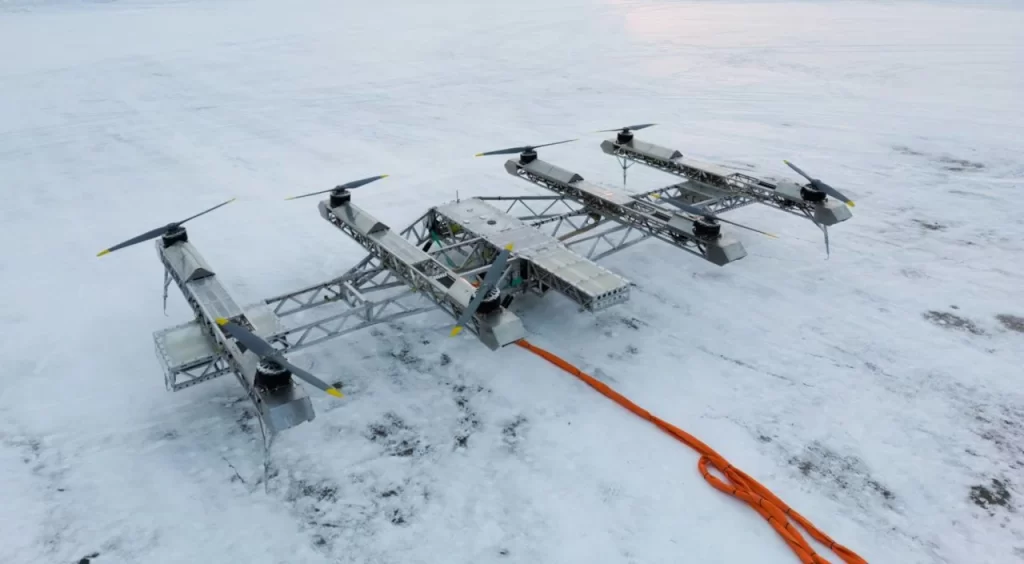According to the United Aircraft Corporation (UAC) Telegram channel, flight tests of a prototype of a heavy vertical takeoff and landing unmanned aerial system (UAS) were carried out by specialists from the Sukhoi Design Bureau, which is a member of the UAC, which is a subsidiary of the Rostec State Corporation. Control algorithms, as well as the performance of takeoff, hovering, and landing systems, were put through their paces during the simulations that were conducted on the integrated flying stand.

Sukhoi Design Bureau is developing an unmanned transport system for off-airfield basing, also known as UTS-OAB. The design bureau initiated the project, and it is not state-funded. The project leader of “UTS-OAB”, Evgeny Rubtsov, said the advantages of an aeroplane and the capabilities of a helicopter are combined in our unmanned aerial vehicle (UAV). A piston engine and an electric lifting powerplant are both hybrid powertrain components. Lifting engines mounted on the wing beams can accomplish vertical takeoff and landing. Once the aircraft has taken off, the petrol engine will begin to operate. According to Evgeny Rubtsov, the project head of “UTS-OAB,” the wing improves fuel efficiency. Because it opens the door to the potential of vertical takeoff, there is no requirement to construct costly airfield infrastructure and runways.
Delivering products weighing up to 300 kilograms to hard-to-reach communities where the transportation network is not well established or where there are no airfields will be possible thanks to this innovative solution, which will make it possible to solve a wide range of transport and logistics problems. The UTS-OAB can carry out flights up to 500 kilometres from its location permanently deployed. All operations, including takeoff, flight along the route, and landing, are carried out entirely automatically, with the operator not directly involved in any of them. The operator, on the other hand, can alter the route in an emergency.

